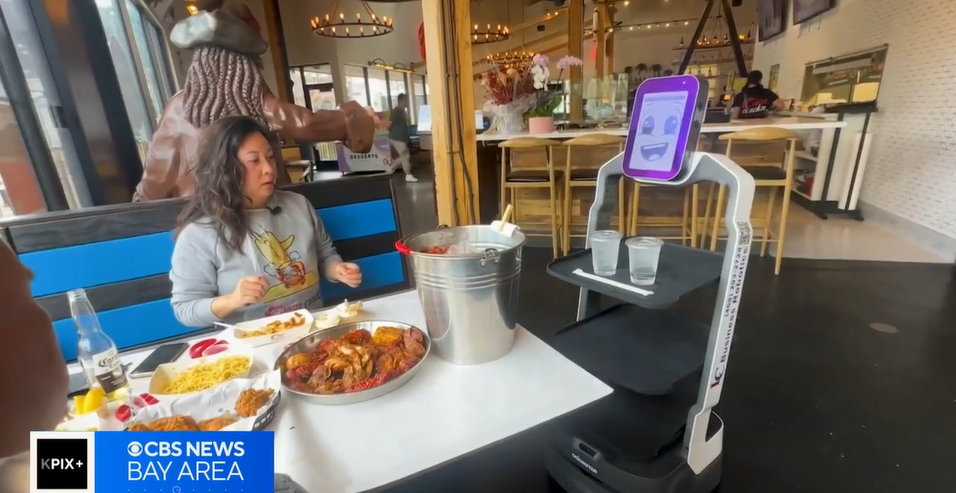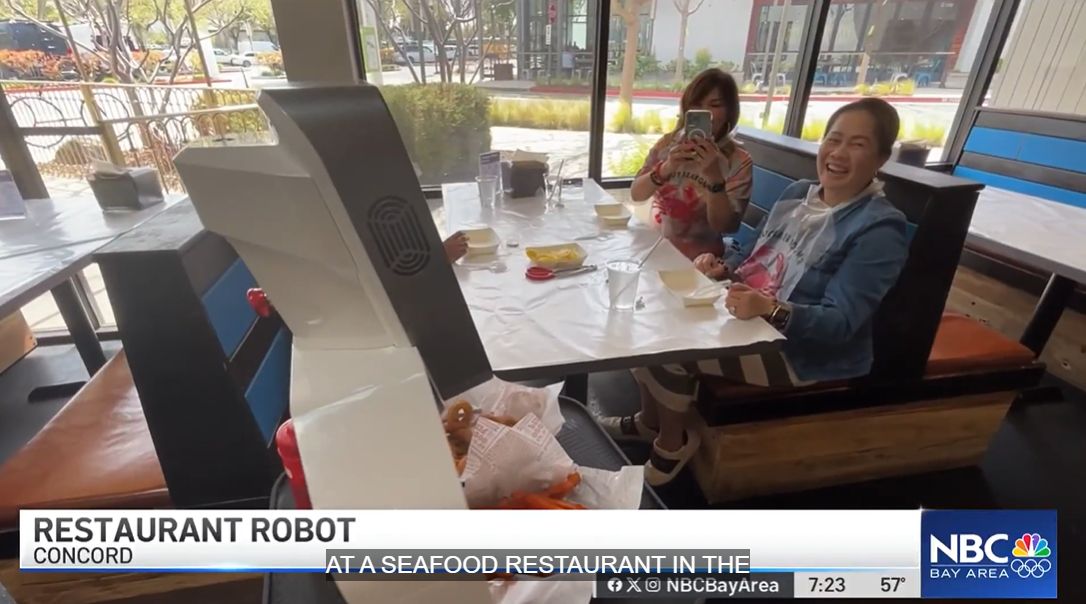The Making of a Lucki Robot
Aug 19, 2022
Humans have always envisioned that someday robots could perform work we don’t want to do, or necessarily need to do in person (e.g., repetitive or dangerous tasks) because robots may be more efficient. Today, service robots fulfill many tasks, including cleaning, providing directions, transporting products, etc. While humans will certainly continue doing many of these things (e.g., greeting visitors), there are certain aspects of this role such as providing directions that don’t need to be done by humans.
Recognizing the high labor costs in the service industry, former product manager Fu Sheng committed himself to the study and creation of really useful service robots. Through his efforts, he went on to become the President of robotics company OrionStar, headquartered in Beijing, China, which now sells several different models.
Fu quickly realized that modern developments in AI could move machines beyond traditional fixed operations and into the realm of dynamic adaptations for changing environments. Using vertically-integrated AI capabilities, the company’s lineup now includes their AI Robot Greeting and AI Robot Greeting Mini disinfection service robots, Smart Coffee Master,
a bionic dual-arm service robot, and Lucki , a delivery robot used primarily for food delivery in restaurants. Fu also told us that by June of 2022, nearly 35,000 OrionStar robots have been employed, with 17 million average daily voice interactions helping to serve more than 400 million people.

Lucki is capable of making short-distance deliveries across multiple location markers by utilizing visual and laser SLAM (simultaneous localization and mapping) and provides customers with contactless delivery service. It’s powered by the Snapdragon 845 mobile platform, which sits on a Thundercomm D845 SoM (System on Module). For OrionStar, the compact SoM is a real standout in the ARM single-board computer platform segment. Measuring 100 cm x 100 cm x 130 cm (approximately 3.3 ft x 3.3 ft x 4.3 ft), Lucki can handle loads up to 40 kg while its multi-layer, 360-degree adjustable tray allows it to pick up and set down food from multiple angles. Lucki can also make real-time adjustments based on required delivery times.
OrionStar has developed a full chain of AI technologies that handle voice interaction, image recognition, and visual navigation. Behind this sits OrionStar’s full-link voice technology, microphone array, full-perception visual recognition, indoor navigation platform, six-axis robotic arms, and chip + algorithm – what the company describes as the brain. OrionStar’s RobotOS, Orion Voice OS, and navigation system in conjunction with Android, allow for quick integration of software and hardware, and customizations. The company has obtained hundreds of patents and now occupies a leading position within the industry in terms of its technology.

Lowering Costs, Increasing Capabilities
When OrionStar officially launched its service robots in 2018, its products required three processors to handle vision, navigation, and system operations. However, research showed that manufacturing costs were too high. OrionStar returned to the drawing board and improved its design around a single chip that could perform the functions of three dedicated processors, lower the total bill of materials cost, and allow for deployment across a wide variety of industries.
OrionStar applauds the Snapdragon 845 for its high compatibility and performance when applied to robots and views its architecture as a system with a strong hub and robust scalability. The company specifically acknowledges the SoC’s breadth of capabilities including image processing, 3D acceleration, audio processing, sensor management, camera control, and network connectivity, along with its ease of foreign certifications.
Looking Forward
OrionStar says they are ready to collaborate with new partners in the service robot industry to develop, cooperate, and conduct in-depth studies on different scenarios for mutually beneficial results.
President Fu stated that "creating service robots is like taking a spaceship to a new planet because there’s no standard of reference available. When you’re dealing with startups in an already innovative industry, everything is brand new. We are developing products in an industry without any established or universal standards. It is a process of trial and error, that requires perseverance. We believe continual small steps will inevitably lead to success".
Looking to the future, Fu points to this MarketsandMarkets report that forecasts the global intelligent robot opportunity will grow from 6.1 billion USD in 2020 to 23 billion USD in 2025, with a CAGR of 30.5% during that period. Fu says this data is an indication of the growth expected for robotics in the future. Here at Qualcomm Technologies, we are proud that our robotics platforms are helping to drive inventive solutions such as OrionStar’s Lucki robot.

26 Mar, 2024
The unique integration of the robot server, Lucki, did not go unnoticed. Local media news outlet, Telemundo Chicago, picked up on Atardecer Acapulqueño's innovative approach and showcased the restaurant and the robot server, Lucki in a news feature. The restaurant's commitment to leveraging technology for a cutting-edge dining experience became the focus of a news feature, amplifying its visibility and reaching a broader audience.

18 Mar, 2024
To maintain its reputation as a premier ramen chain that not only delivers exceptional food but also an unforgettable experience, Kyuramen has embraced the latest advancements in technology. By incorporating robots into its operations, Kyuramen aims to elevate its successful feat even further.
© 2024
PDT Robotics LLC dba OrionStar USA All Rights Reserved




